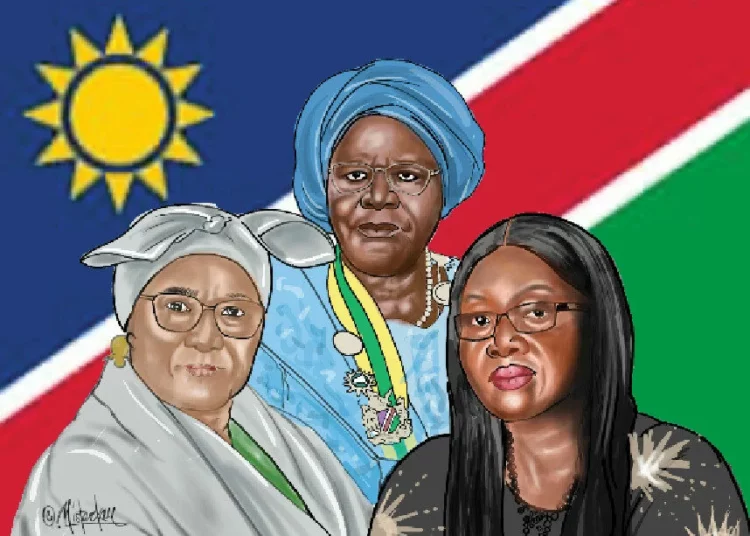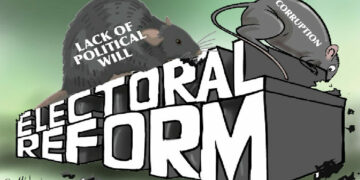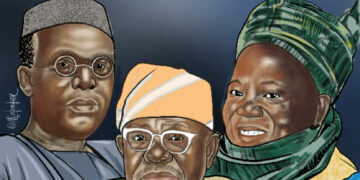In a world that seems endlessly drawn to Africa’s crises of coups, conflicts and corruption, Namibia is quietly scripting a different story. It is a story of progress, of steady governance, of women rising to political power without fanfare or foreign headlines. Yet, the silence from the international media, and even within Africa itself, is deafening.
If this were a tale of corruption, terrorism, conflict, electoral violence, or political suppression, it would dominate front pages and trending hashtags. But Namibia’s success in creating one of the most gender-balanced political systems in the world has attracted barely a whisper of recognition. The world seems more comfortable with an Africa in crisis than with an Africa that leads.
Nestled between Angola, Botswana, Zambia, and the Atlantic Ocean, Namibia has long been viewed as one of Africa’s more stable democracies. Since gaining independence from South Africa in 1990, it has maintained peaceful transitions of power, constitutional order, and steady development. Yet, what is unfolding in its political landscape today is nothing short of revolutionary, particularly for women.
Namibia’s ruling party, SWAPO (South West Africa People’s Organisation), made a bold and historic move in 2013 when it adopted a “zebra” system: a 50/50 gender policy that alternates men and women in leadership positions across all levels of political representation. The principle is simple: for every male leader, there must be a female counterpart and vice versa.
The results have been transformative. Namibia now ranks sixth among the top ten countries globally for women’s representation in Parliament, ahead of most European nations, and only behind Rwanda on the African continent. According to the Inter-Parliamentary Union (IPU), women occupy nearly 49% of Namibia’s National Assembly seats, and about 44% in the Cabinet.
This is not symbolic inclusion. It is a structural reimagining of governance, a deliberate design that enshrines gender equality at the heart of decision-making.
A Quiet Revolution The World Isn’t Watching
Namibia’s progress is neither accidental nor donor-driven. While many African nations adopted gender quotas under external pressure, Namibia’s “zebra” system — a 50/50 gender policy — was homegrown, politically negotiated, and embedded within party ideology.
It was not a token gesture but a redesign of political power. Men ceded space; women were strategically positioned for leadership; and gender parity became part of Namibia’s political DNA. The result is a generation of women who are not figureheads but real power brokers shaping national policy.
On March 21, 2025, Namibia made history by inaugurating an all-women leadership team during its 35th Independence Day celebrations — Netumbo Nandi-Ndaitwah as the first female President, Lucia Witbooi as Vice President, and Saara Kuugongelwa-Amadhila as Speaker of the National Assembly.
Nandi-Ndaitwah’s rise is not seen as tokenism but as the natural culmination of a lifetime of service from liberation fighter to foreign minister to seasoned SWAPO leader. Her presidency reflects the maturity of Namibia’s inclusive politics and the strength of deliberate reform.
Yet six months on, the world remains largely silent. Global headlines still fixate on coups in the Sahel, Zimbabwe’s disputed elections, and Nigeria’s insecurity. Namibia’s story of peace, progress, and parity does not fit the familiar script of African dysfunction.
The silence speaks volumes. When African nations stumble, the world watches. When they succeed on their own terms, the world looks away. Namibia’s quiet revolution exposes a deep bias: African innovation rarely inspires the same fascination as African crisis.
Africa’s Gender Leadership Gap
Namibia’s success stands out even more sharply against the wider African backdrop. Despite decades of advocacy and commitments, from the Beijing Platform for Action to the African Union’s Agenda 2063, progress on women’s political participation across much of the continent remains uneven.
Rwanda remains the global leader, with women holding 61% of parliamentary seats, a remarkable legacy of its post-genocide reforms. Yet, outside of Rwanda and Namibia, few African nations have institutionalised gender parity at this scale. In Nigeria, for instance, women hold just 4% of parliamentary seats, one of the lowest rates in the world.
Even in countries that boast democratic credentials, such as Kenya or South Africa, women continue to face systemic barriers: party gatekeeping, gender-based violence in politics, and a lack of financial support for campaigns. Namibia’s “zebra” model offers an alternative path, one that does not depend on tokenistic quotas but on political will and design. It demonstrates that gender equality in leadership is not a byproduct of progress; it is progress.
A Case Study Africa Should Learn From
Critics often ask whether gender parity improves governance. In Namibia’s case, it clearly does. The country’s investment in gender inclusion has delivered results, stronger education outcomes, better maternal health, and more responsive social protection. Policy debates are broader, with greater attention to youth, family welfare, and community resilience.
Women leaders have driven key reforms, from the Child Care and Protection Act, which strengthens children’s rights, to gender-responsive budgeting that ensures fairer resource allocation. Their visibility has reshaped social norms: in rural Namibia, girls now grow up seeing women as ministers and MPs, not exceptions, but part of everyday leadership.
This inclusion has also improved the tone of politics. Women’s presence has reduced the combative, winner-takes-all style typical of many male-dominated systems. Political scientist Selma Nghikembua notes that “women in Namibia have brought a more collaborative and pragmatic style to governance, one less about dominance, and more about delivery.”
Namibia’s model challenges enduring myths that gender parity undermines stability, that African societies must choose between tradition and progress, or that women’s empowerment must come from outside the continent.
Crucially, this success was not donor-driven. It was born of political courage and vision. Namibia shows that when gender equality is treated not as tokenism or charity, but as a constitutional principle, democracy deepens, trust grows, and governance works better for everyone.
The Africa the World Needs to See
The irony is that Namibia’s success story remains largely invisible on the global stage. Even within Africa, discussions on women’s leadership often celebrate Rwanda and rightly so, while overlooking Namibia’s equally remarkable progress. This invisibility reflects a broader pattern: when African nations innovate in governance or peacebuilding, the world looks away. Global media gravitates to the sensational, not the substantive.
But ignoring Namibia’s example comes at a cost. The world misses a working model; African policymakers lose a chance to learn; and young women lose a narrative of hope, a reminder that leadership is within reach. It’s time to tell Namibia’s story loudly. The continent must own its successes and spotlight progress with the same energy it uses to condemn failure. African media, including ours, must help break the silence.
For too long, global conversations on women in politics have centred on Western examples from New Zealand to Finland to the United States, while African women like Nandi-Ndaitwah quietly prove that leadership excellence has no geography.
Namibia is not perfect. Like any democracy, it faces inequality, unemployment, and regional gaps. Yet, it is charting a path worthy of attention. In a time when Africa’s image is clouded by coups and corruption, Namibia stands as proof that inclusion and good governance are possible and happening.
The world should look southward. Namibia shows what Africa’s democratic future can be: gender-balanced, stable, principled, and inclusive. And if the world won’t celebrate that, we as Africans must. Telling our stories, especially of success, is itself an act of power.





